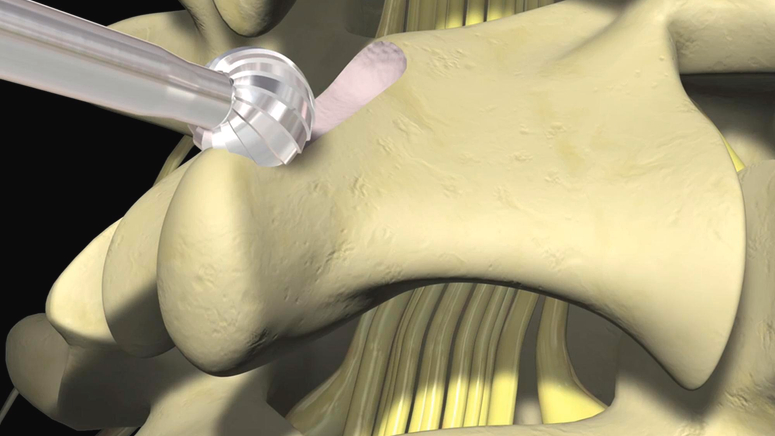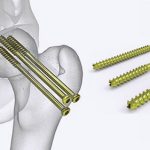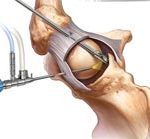LAMINECTOMY
What is a laminectomy?
Back or neck pain that interferes with normal daily activities may need surgery for treatment. Laminectomy is a type of surgery in which a surgeon removes part or all of the vertebral bone (lamina). This helps ease pressure on the spinal cord or the nerve roots that may be caused by injury, herniated disk, narrowing of the canal (spinal stenosis), or tumors. A laminectomy is considered only after other medical treatments have not worked.
Why Iran for Laminectomy?
Laminectomy is one of the most delicate surgical procedures as it has many different types that all differ from each other, and the treated area is mainly the spine and neck, which is considered a high-risk area, as the smallest mistake may lead to catastrophic complications. However, Iran, with its reputation for having some of the most experienced surgeons worldwide can give you the best results possible from this surgical procedure, and it can ensure you that you will go back to your everyday life in no time by having laminectomy in Iran.
How much does Laminectomy cost in Iran?
The total cost of Laminectomy procedure ranges between $9,400 and $12,700, depending on the condition of the patient and the medical center. However, this number differs from one country to another. For example, the surgery costs around $6,000 – $11,000 in Germany, while it may reach $25,000 in the USA. Luckily, in Iran you can get the best results for the most affordable price, as the cost of laminectomy in Iran is around $2,500, which is only one tenth of its cost in the USA.
Why might I need a laminectomy?
Low back or neck pain can range from mild, dull, and annoying to persistent, severe, and disabling. Pain in the spine can restrict your ability to move and function. Laminectomy may be done to ease pressure on the spinal nerves, treat a disk problem, or remove a tumor from the spine.
One common reason for having a laminectomy is a herniated disk in the spine.
A disk may be displaced or damaged because of injury or wear and tear. When the disk presses on the spinal nerves, this causes pain, and sometimes numbness or weakness. The numbness or weakness will be felt in the body part where the nerve is involved, often the arms or legs. The most common symptom of a herniated disk is sciatica. This is a sharp, shooting pain along the sciatic nerve, extending from the buttocks to the thigh and down the back of the leg.
If medical treatments no longer work, surgery may be a choice. Some medical treatments for pain may include:
– Changes in activity
– Medicines, such as muscle relaxants, anti-inflammatory medicines, and pain relievers
– Spinal injections
– Physical rehabilitation, physical therapy, or both
– Occupational therapy
– Weight loss (if overweight)
– Smoking cessation
– Assistive devices, such as mechanical back supports
Laminectomy is usually done for back or neck pain that continues after medical treatment. Or it is done when the pain is accompanied by symptoms of nerve damage, such as numbness or weakness in the arms or legs. Loss of bowel or bladder control from pressure in the cervical or lumbar spine also usually needs surgery.
There may be other reasons for your healthcare provider to recommend a laminectomy.
What are the risks of a laminectomy?
As with any surgical procedure, complications can occur. Some possible complications may include:
– Bleeding
– Infection
– Blood clots in the legs or lungs
– Spinal cord or nerve root injury
– Risks linked to the use of general anesthesia
Nerve or blood vessels in the area of surgery may be injured. This can cause weakness or numbness. The pain may not be eased by the surgery or may become worse, although this is rare.
There may be other risks depending on your specific health condition. Be sure to discuss any concerns with your healthcare provider before the surgery.
What happens during a laminectomy?
A laminectomy usually requires a stay in a hospital. Procedures may vary depending on your condition and your doctor’s practices.
A laminectomy may be done while you are asleep under general anesthesia. Or it may be done while you are awake under spinal anesthesia. If spinal anesthesia is used, you will have no feeling from your waist down. Newer techniques are being developed that may allow a laminectomy to be done under local anesthesia as an outpatient. Your doctor will discuss this with you in advance.
Generally, a laminectomy follows this process:
1- You will be asked to remove clothing and will be given a gown to wear.
2- An IV (intravenous) line may be started in your arm or hand.
3- Once you are under anesthesia, a urinary drainage catheter may be inserted.
4- If the surgical site is covered with extra hair, the hair may be clipped off.
5- You will be positioned either on your side or belly on the operating table.
6- The anesthesiologist will continuously watch your heart rate, blood pressure, breathing, and blood oxygen level during the surgery.
7- The healthcare staff will clean the skin over the surgical site with an antiseptic solution.
8- The surgeon will make a cut (incision) over the selected vertebra.
9- The surgeon will spread the muscles apart.
10- The surgeon removes the bony arch of the posterior part of the vertebra (lamina) to ease the pressure on the nerves in the area. This may involve removing bone spurs or growths, or removing all or part of a disk.
11- In some cases, spinal fusion may be done at the same time. During a spinal fusion, the surgeon will connect 2 or more bones in your spine.
12- The incision will be closed with stitches or surgical staples.
13- A sterile bandage or dressing will be applied.
 How Many Types of Laminectomy Are There?
How Many Types of Laminectomy Are There?
There are several types of laminectomy (decompression surgery):
Laminectomy: This procedure involves removing the entire bony lamina, a portion of the enlarged facet joints, and the thickened ligaments overlying the spinal cord and nerves.
Laminotomy: In this procedure, a small portion of the lamina and ligaments is removed, usually on one side. In this method, the surgeon leaves the natural support in its place, which decreases the chance of spinal instability. However, in some cases an endoscope may be used, allowing for a smaller and less invasive incision.
Foraminotomy: In this procedure, the surgeon removes the bone around the neural foramen, where the nerve root exits the spine, in order to relieve the pressure caused by the degeneration of a disk that has caused the height of the foramen to collapse and pinch a nerve.
Laminoplasty: In this procedure, the surgeon expands the spinal canal by cutting the laminae on one side and swinging them open like a door. However, this procedure is used only in the neck (cervical) area.
Discectomy: This procedure is done to remove a portion of a bulging or degenerative disc in order to relieve pressure on the nerves.
Facetectomy: A lumbar facetectomy is a surgical procedure to remove the pressure of the spinal nerve roots near the facet joint when conservative medical treatment fails to control pain and other symptoms of facet disease
Corpectomy or Vertebrectomy: this surgical procedure involves removing all or part of the vertebral body as a way to decompress the spinal cord and nerves. In most cases, corpectomy is performed in association with some form of discectomy.
Is it Important to Exercise After Laminectomy?
During the recovery process, doctors recommend regular exercise to restore the strength of your back and to help you return gradually to your everyday activities. In most cases, your orthopedic surgeon and physical therapist will make a specific exercising plan for you to follow. However, if this is not the case, there are common exercises that are recommended for most patients. These exercises include:
– Ankle pumps
– Heel slides
– Single knee to chest stretch
– Piriformis stretch
– Abdominal contraction
– Wall squats
– Heel raises
– Hip flexor stretch
– Straight leg raises
– Hamstring stretch
– Lumbar stabilization exercises with Swiss ball
– Lying on Swiss ball using different positions
– Aerobic exercises
– Stationary bike for 20 to 30 minutes.
– Treadmill for 20 to 30 minutes.
Why Iran for Laminectomy?
Laminectomy is one of the most delicate surgical procedures as it has many different types that all differ from each other, and the treated area is mainly the spine and neck, which is considered a high-risk area, as the smallest mistake may lead to catastrophic complications. However, Iran, with its reputation for having some of the most experienced surgeons worldwide can give you the best results possible from this surgical procedure, and it can ensure you that you will go back to your everyday life in no time by having laminectomy in Iran.
How much does Laminectomy cost in Iran?
The total cost of Laminectomy procedure ranges between $9,400 and $12,700, depending on the condition of the patient and the medical center. However, this number differs from one country to another. For example, the surgery costs around $6,000 – $11,000 in Germany, while it may reach $25,000 in the USA. Luckily, in Iran you can get the best results for the most affordable price, as the cost of laminectomy in Iran is around $2,500, which is only one tenth of its cost in the USA.


















